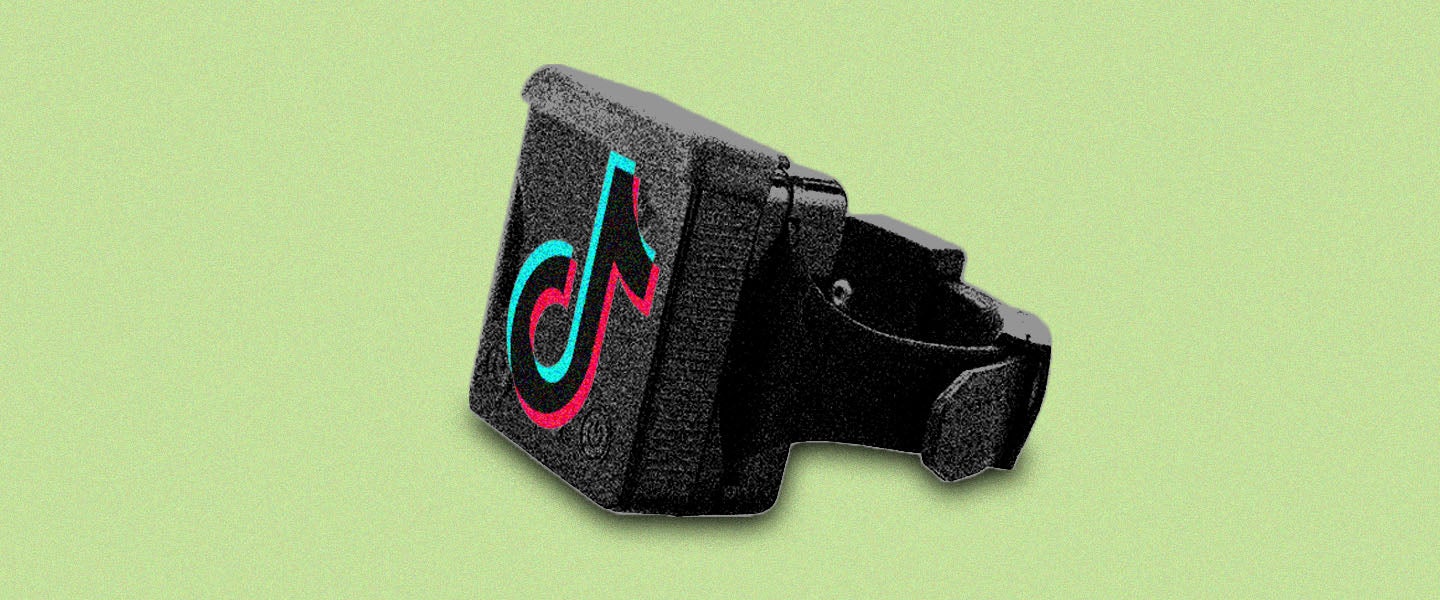On TikTok, having an ankle monitor isn’t a source of shame. In fact, many of those serving a sentence of home confinement put theirs on display, and there’s an audience eager for more — the hashtag #housearrest has nearly six million views.
One creator, @anklemonitorkid, has even amassed 34,000 followers and 388,300 likes on the app for his videos making light of his experience. But there are also plenty of others whose videos garner much less attention, and whose tone is much less humorous (intentionally or otherwise).
Restricted to their home for months on end, there’s obviously a limited supply of things for people on house arrest to do, and in this claustrophobic world, social media isn’t simply a means of entertainment and a way to pass the time –– it’s a vital connection to the outside world.
It’s also important to remember when judging these videos that these guys aren’t exactly hardened felons. “House arrest is mainly used for non-violent crimes, first offenders and misdemeanors rather than felonies,” says Louis Shapiro, a criminal defense attorney in L.A. “Judges are more open to it lately because prison is overcrowded. Let’s say someone gets sentenced to 30 days in jail for theft: In all likelihood, they’re not even going to do more than three or four days because of early release for overcrowding,” he says. Because of this, between 2005 and 2015, the number of people given house arrest more than doubled from 53,000 to 125,000.
“Lefty,” a man in his 20s in Massachusetts, tells me he was sentenced to 30 months of house arrest after having completed 29 months of prison for firearms charges. He ended up only doing 16 months of house arrest, but the terms were strict. “I literally couldn’t leave my house at all,” he says. Compounding his isolation, he lived with his mother, who didn’t allow him to have guests. “I gained 36 pounds. I worked out. I read books. I ate (a lot). I watched a lot of porn,” says Lefty. “Pretty much everything you’d do in jail, just in better conditions.”
Though many are required to stay in their home save for court appointments, medical care or meetings with their parole officers, some are allowed to leave the home for work, transporting their children to school or basic tasks like grocery shopping. “It’s often called home confinement, but that can be a little misleading,” says Shapiro. “They don’t always have to stay at home with it on –– they just have to be reporting to the electronic company where they are.”
The process of reporting to the electronic company can be stressful, though. As many TikToks demonstrate, people often have issues keeping their ankle monitors charged, and something as simple as a battery failure or technical error could land them back to jail. Also worth noting, those given house arrest must pay for the monitoring equipment themselves. “They run about $20 to $30 a day, depending on how much you make. It gets expensive,” says Shapiro. “[Ankle monitors] are run by private companies, not by the government. The government contracts with these companies, but ultimately it’s the defendant that bears the cost.”
Still, paying for the service is preferable to jail time for many, as you’d imagine. Along with the more obvious benefits, remaining in the home helps detainees feel more connected to their family and the rest of society than they would in prison, which social media can help bolster even further. “There’s a lot of talk about criminal justice reform and rehabilitation rather than labeling people and excluding them from getting back in the world,” says Tama Kudman, a criminal defense attorney based in New York City and Florida. “[TikTok] may be a good way for people to still feel like they’re part of society, to be part of the world and have an incentive to rehabilitate themselves. Being labelled a felon is a branding that follows people for life and makes them feel very much other. So the sense that social media reincorporates people back into the world might actually be therapeutic.”
Still, not everyone feels so optimistic about house arrest. “At some points, I wanted to be locked up again,” says Lefty. “Ironically, I felt like I had more freedom in jail. It was spiritually agonizing, looking out my window of my mother’s house where I hadn’t been in years, watching the world pass me by as I rotted away.” Although social media provided some entertainment for a while, it eventually “fell into the same idea of watching the world go by,” he says. “All these attractive women, current news, I just stopped looking at it after a while.”
According to Cathy Allsman, a psychologist in Miami, the effects of social media on a person undergoing house arrest aren’t too different than those of a person who’s less confined. The “comparison trap,” as writers have coined it — i.e., feeling inadequate about oneself in relation to how others portray their lives on social media — is an issue anyone can experience. “People who are looking at those curated lives and comparing their own… for someone who is incarcerated, that feeling is even larger: ‘Here are people living lives that I can’t live,’” says Allsman. “People under house arrest are going to have the same good and bad effects as anybody with social media, except it’s going to be exaggerated because they’re more isolated. They need the contact more, but they’re less able to live the lives they see on social media. The question for everyone is, are you using it to stay connected, or are you using it to avoid connection?”
For men on house arrest, then, social media becomes a double-edged sword — a necessary connection to the world beyond the confines of the home, and a constant reminder of how inaccessible that world is.

